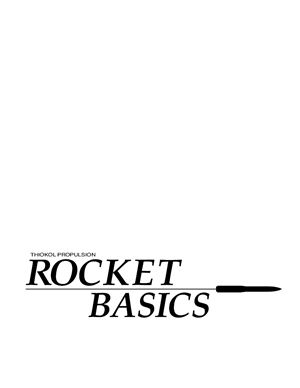Rocket basics. A guide to solid propellant rocketry.
Основные сведения теории и конструирования ракетных двигателей на твёрдом топливе (РДТТ) на английском языке. Материал принадлежит американской компании Thiokol Propulsion (сейчас ATK Launch Systems Group). 37 страниц.
Для студентов, специализирующихся в области ракетного двигателестроения. Полезен для ознакомления с РДТТ, а также для изучения профессиональной технической английской терминологии в этой области.
Background and applications (История и практическое применение)
What makes a rocket operate? (Что заставляет ракету двигаться? )
Defining performance (Определяющий параметр)
Mode rocket designs (Современные конструкции ракет)
Cases (Корпусы/Камеры)
Ignition (Воспламенение)
Nozzles (Сопла)
Flight direction control (Управление направлением полёта)
Propellants (Ракетные топлива)
Основные сведения теории и конструирования ракетных двигателей на твёрдом топливе (РДТТ) на английском языке. Материал принадлежит американской компании Thiokol Propulsion (сейчас ATK Launch Systems Group). 37 страниц.
Для студентов, специализирующихся в области ракетного двигателестроения. Полезен для ознакомления с РДТТ, а также для изучения профессиональной технической английской терминологии в этой области.
Background and applications (История и практическое применение)
What makes a rocket operate? (Что заставляет ракету двигаться? )
Defining performance (Определяющий параметр)
Mode rocket designs (Современные конструкции ракет)
Cases (Корпусы/Камеры)
Ignition (Воспламенение)
Nozzles (Сопла)
Flight direction control (Управление направлением полёта)
Propellants (Ракетные топлива)

